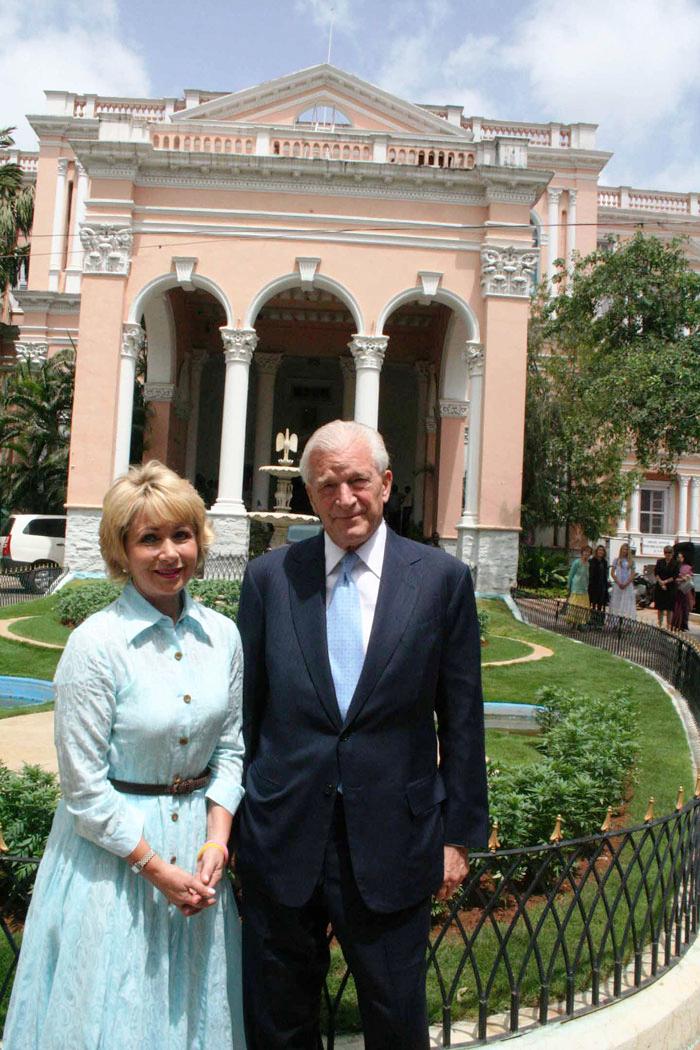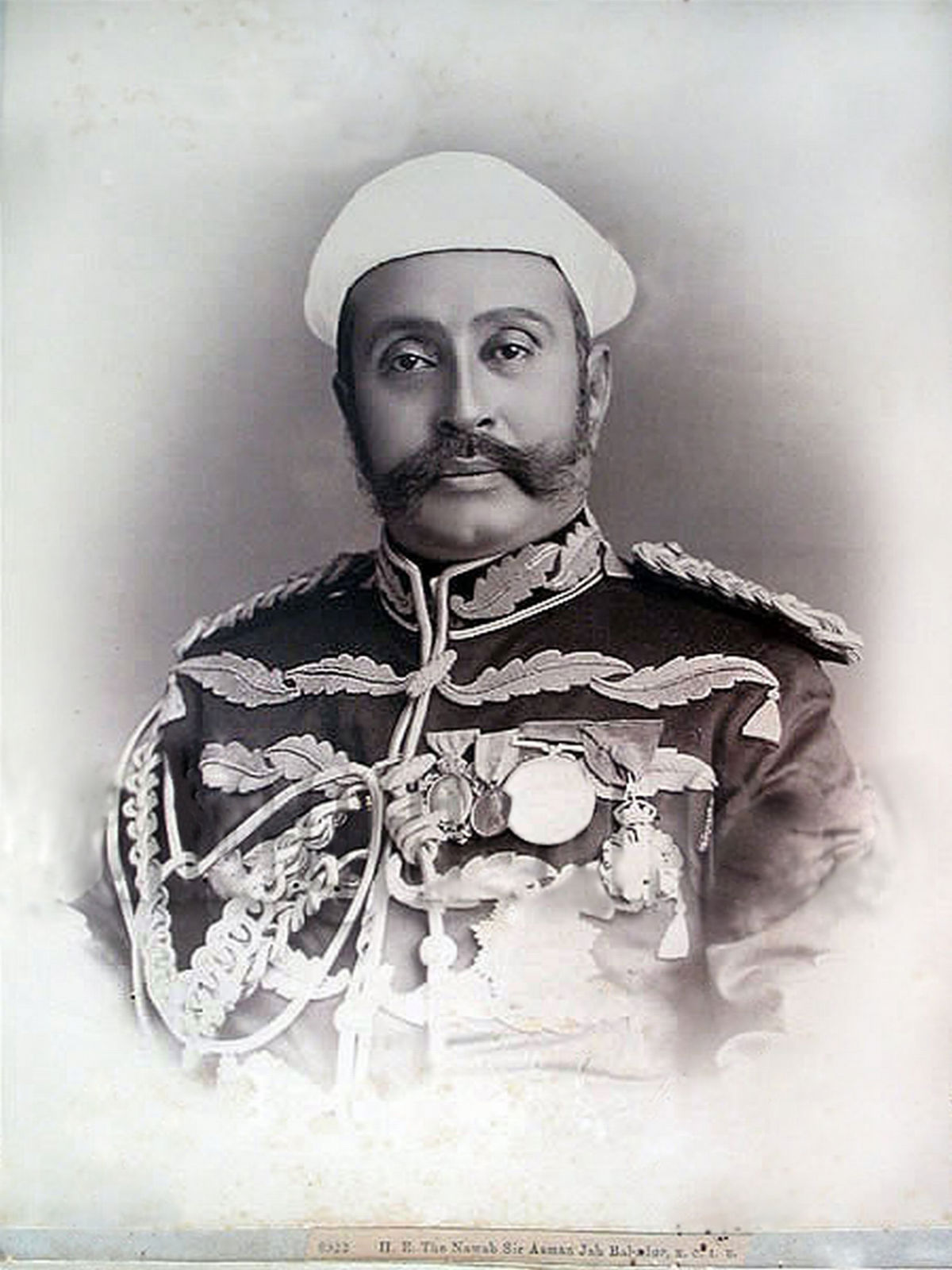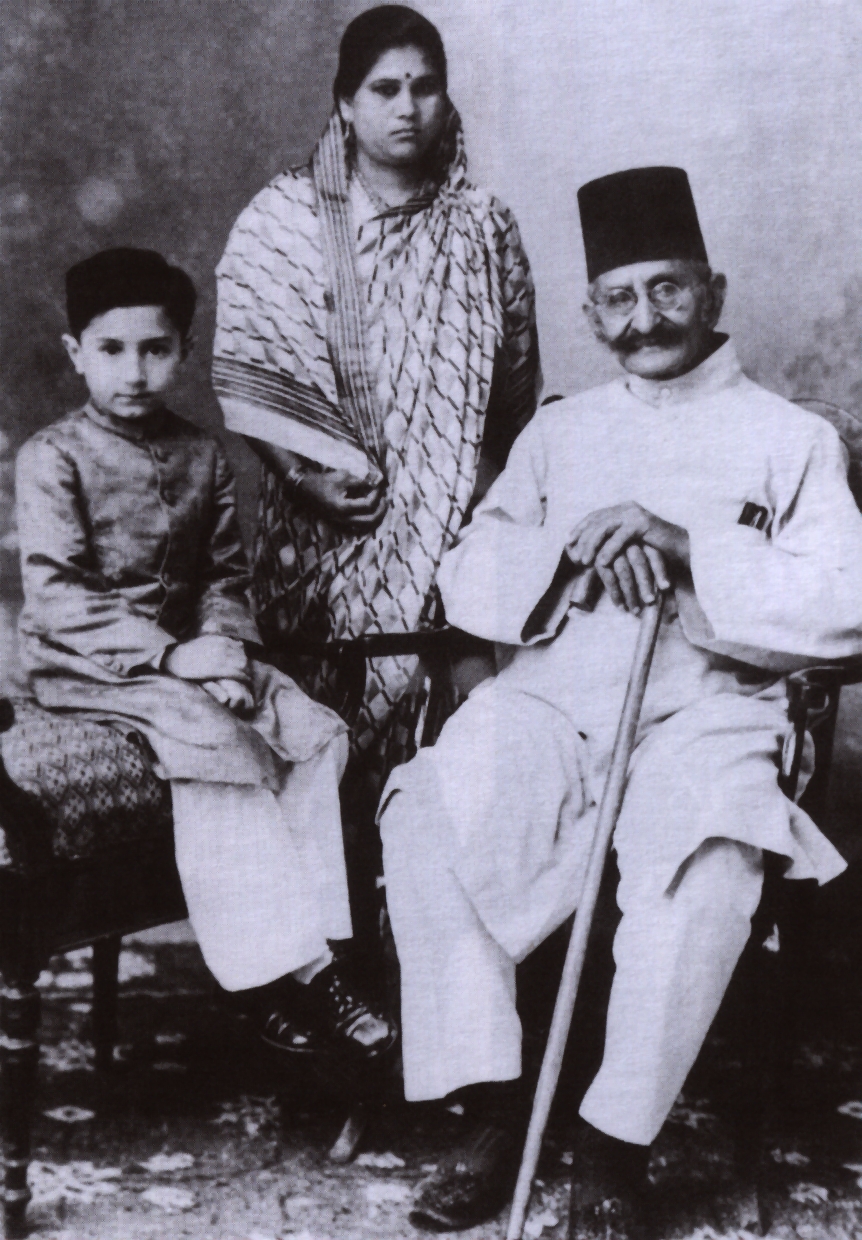|
Vicar-ul-Umra
Sir Viqar ul-Umara, Iqtidar ul-Mulk, Iqbal ud-Dowla, Secundar Jung, Nawab Muhammad Fazl-ud-din Khan Bahadur (13 August 1856 – 15 February 1902), was the Prime Minister of Hyderabad from 1893 to 1901, and also served as the Amir e Paigah from 1881 to 1902. The town of Vikarabad and Village is named after him. Early life and ancestry Viqar-ul-Umra was born as Muhammad Fazluddin Khan on 13 August 1856 to Rashiduddin Khan and Hashmatunnisa Begum. Viqar-ul-Umra's maternal grandmother was Bashirunnisa Begum, a daughter of Nizam Ali Khan Nizam of Hyderabad and Berar. Viqar-ul-Umra was a member of the Paigah family. The family was hierarchically second to the Nizam of Hyderabad. The family members were staunch loyalists of the Nizam. The family descends from the Rashidun caliph Umar. One of the family's ancestor is the Sufi saint Fariduddin Ganjshakar. Another ancestor Muhammad Abu’l Khair Khan was a ''mansabdar'' during Mughal emperor Aurangzeb's reign. Tenure as prime minister ... [...More Info...] [...Related Items...] OR: [Wikipedia] [Google] [Baidu] |
Paigah Palace
Paigah Palace is a palace in Hyderabad, India. It was built by Sir Vicar-ul-Umra, a Paigah nobleman. This was built after he gave the famous Falaknuma Palace to the sixth Nizam of Hyderabad state, Mahbub Ali Khan, Asaf Jah VI. The Palace houses the Consulate General of the US in Hyderabad. History Between 1975 and 2008, the palace housed the office of the Hyderabad Urban Development Authority. In 1999, a four-storeyed annexe was added towards the rear side of the palace. Paigah Family In the hierarchy of nobles of Hyderabad, the Paigah family ranked immediately next to the ruling family of Nizams. The Paigahs were also the foremost palace builders of Hyderabad. As described earlier, the Falaknuma Palace was built by Nawab Viqar ul-Umra This was later acquired by the Nizam VI. Vikarul Umra also built the Paigah Palace in Begumpet, presently the office of USA Consulate and having previously hosted the office of Hyderabad Urban Development Authority. It dates back to ... [...More Info...] [...Related Items...] OR: [Wikipedia] [Google] [Baidu] |
Paigah Family
Paigah is a noble family in the senior aristocracy of Hyderabad State, who were associated with the ruling Nizam since its inception and each maintained his own court, individual palaces, and a standing army of about fourteen thousand troops, both infantry and cavalry. History The word ''Paigah'', which means pomp and rank in Persian, was a title given by the second Nizam of Hyderabad to Nawab Abul Fateh Taig Jung Bahadur in appreciation of the royal services rendered by him. The Nawab was also conferred with the title of ''Shams-ul-Umra'', ''Shams-ul-Mulk'' ''Shams-ud-Daula'' Shams-ul-Umra which Means "The Sun among Nobles" and he became the founder of the Paigah family. Shaikh Muhammad Bahauddin who was Governor of Shikohabad under Mughal Emperor Aurangzeb was the twelfth direct descendant of Shaikh Fariduddin Ganjshakar a saint of Indian subcontinent-(now Punjab, Pakistan), whose linage is traced up to Omar bin Al-Khattab-the second Caliph of Islam. Abul Khair Khan son of ... [...More Info...] [...Related Items...] OR: [Wikipedia] [Google] [Baidu] |
Nawab Asman Jah Bahadur
Nawab Sir Muhammad Mazharuddin Khan Bahadur (1839 – 18 July 1898), commonly known as Sir Asman Jah or Nawab Sir Asman Jah Bahadur, was an Indian noble who served as Prime Minister of Hyderabad from 1887 to 1894. A member of the powerful Paigah family, He Was a grandson of His Highness the Nizam Nawab Sikander Jah, Asaf Jah III And he was married to parwarish unisa begum daughter of Afzal-ud-Daulah 5th nizam of Hyderabad State, Asman Jah built the Asman Garh Palace, Basheer Bagh Palace, saroonagar palace and Mahboob Chowk Clock Tower. He also represented Nizam Mahbub Ali Khan at the Golden Jubilee of Queen Victoria and played as regent to Mahboob Ali Khan. Early life and ancestry Asman Jah was born as Mazharuddin Khan in 1839, although his exact date of birth is not recorded. His biological father Sultanuddin Khan was the third son of Fakhruddin Khan. After Sultanuddin's death, Asman Jah was adopted by his uncle Rafiuddin Khan Shams-ul-Umra III. Jah's maternal grandmothe ... [...More Info...] [...Related Items...] OR: [Wikipedia] [Google] [Baidu] |
Falaknuma Palace
Falaknuma is a palace in Hyderabad, Telangana, India. It originally belonged to the Paigah family, and was later owned by the Nizam of Hyderabad. It is on a hillock and covers a area in Falaknuma, from Charminar. It was built by Nawab Sir Viqar-ul-Umra, Prime Minister of Hyderabad and the uncle & brother-in-law of the sixth Nizam. ''Falak-numa'' means "Like the Sky" or "Mirror of Sky" in Urdu. Design An English architect William Ward Marret designed the palace. Sir Vicar's monogram "VO" is on the furniture, walls and ceiling of the palace. It is made completely with Italian marble with stained-glass windows and covers an area of . The palace was built in the shape of a scorpion with two stings spread out as wings in the north. The middle part is occupied by the main building and the kitchen, ''Gol Bangla'', ''Zenana Mehal'', and harem quarters stretch to the south. The Nawab was an avid traveller, and his influences show in the architecture, which combines Italian and Tudo ... [...More Info...] [...Related Items...] OR: [Wikipedia] [Google] [Baidu] |
Kaiser-i-Hind
The Kaisar-i-Hind Medal for Public Service in India was a medal awarded by the Emperor/Empress of India between 1900 and 1947, to "any person without distinction of race, occupation, position, or sex ... who shall have distinguished himself (or herself) by important and useful service in the advancement of the public interest in British Raj." The name "Kaisar-i-Hind" ( ur, ''qaisar-e-hind'', hi, क़ैसर-इ-हिन्द) literally means "Emperor of India" in the Hindustani language. The word ''kaisar'', meaning "emperor" is a derivative of the Roman imperial title Caesar, via Persian (see Qaysar-i Rum) from Greek Καίσαρ ''Kaísar'', and is cognate with the German title Kaiser, which was borrowed from Latin at an earlier date. Based upon this, the title ''Kaisar-i-Hind'' was coined in 1876 by the orientalist G.W. Leitner as the official imperial title for the British monarch in India.B.S. Cohn, "Representing Authority in Victorian India", in E. Hobsbawm a ... [...More Info...] [...Related Items...] OR: [Wikipedia] [Google] [Baidu] |
Vikarabad
Vikarabad is also Known as Gangawaram(Ancient name) a town and mandal in Vikarabad district of the Indian state of Telangana. It is located in Vikarabad mandal of Vikarabad revenue division. History Vikarabad was known as Gangawaram ancient name, later it was named after the fifth Paigah Amir (Premier noble) H.E. Nawab Sir Vikar-ul-Umrah Bahadur, Sikander Jung, Iqbal-ud-Daula and Iqtadar-ul-Mulk, Nawab Muhammed Fazaluddin Khan KCIE served as prime minister of Hyderabad State and Berar Province between 1893 and 1901. Nawab Sir Vicar-ul-Umrah was the younger son of Nawab Rasheeduddin Khan Bahadur, Shams ul Umra, Amir e Kabir IÌI, Amir e Paigah IV and Co-Regent of Hyderabad. He built three palaces and mansions in Vikarabad, The Vikar Manzil Palace (which presently houses the deputy collector/RDO Office and still belongs to the Paigah family heirs), Sultan Manzil Palace named after his eldest son and heir, H.E. Nawab Sultan ul Mulk Bahadur the last full Amir of Vicar ul U ... [...More Info...] [...Related Items...] OR: [Wikipedia] [Google] [Baidu] |
Paigah Tombs
Paigah Tombs or Maqhbara Shams al-Umara, are the tombs belonging to the nobility of Paigah family, who were fierce loyalists of the Nizams, served as statespeople, philanthropists and generals under and alongside them. The Paigah tombs are among the major wonders of Hyderabad State which known for their architectural excellence as shown in their laid mosaic tiles and craftsmanship work. The Paigah's necropolis is located in a quiet neighbourhood 4 km southeast of Charminar Hyderabad, at Pisal banda suburb, down a small lane across from Owasi Hospital near Santosh Nagar. These tombs are made out of lime and mortar with beautiful inlaid marble carvings. These tombs are 200 years old which represent the final resting places of several generations of the Paigah Nobles. At first, Paigah Tombs may look deserted and totally uncared for, but on a closer look, you will find the place quite enthralling. With marvelous carvings and motifs in floral designs and inlaid mosaic tile-work ... [...More Info...] [...Related Items...] OR: [Wikipedia] [Google] [Baidu] |
Sir Asman Jah
Nawab Sir Muhammad Mazharuddin Khan Bahadur (1839 – 18 July 1898), commonly known as Sir Asman Jah or Nawab Sir Asman Jah Bahadur, was an Indian noble who served as Prime Minister of Hyderabad from 1887 to 1894. A member of the powerful Paigah family, He Was a grandson of His Highness the Nizam Nawab Sikander Jah, Asaf Jah III And he was married to parwarish unisa begum daughter of Afzal-ud-Daulah 5th nizam of Hyderabad State, Asman Jah built the Asman Garh Palace, Basheer Bagh Palace, saroonagar palace and Mahboob Chowk Clock Tower. He also represented Nizam Mahbub Ali Khan at the Golden Jubilee of Queen Victoria and played as regent to Mahboob Ali Khan. Early life and ancestry Asman Jah was born as Mazharuddin Khan in 1839, although his exact date of birth is not recorded. His biological father Sultanuddin Khan was the third son of Fakhruddin Khan. After Sultanuddin's death, Asman Jah was adopted by his uncle Rafiuddin Khan Shams-ul-Umra III. Jah's maternal grandmoth ... [...More Info...] [...Related Items...] OR: [Wikipedia] [Google] [Baidu] |
Maharaja Sir Kishen Pershad
Maharaja Sir Kishen Pershad Bahadur Yamin us-Sultanat (1864 – 13 May 1940) was an Indian noble who served as Prime Minister of Hyderabad twice. He was a childhood friend of the Nizam and was a staunch Nizam loyalist throughout his life. In 1892, Pershad became the '' peshkar'' (deputy minister) of the state. Nine years later, Nizam Mahbub Ali Khan appointed him ''dewan'' (prime minister) of the state. During his first tenure as ''dewan'', he was credited with increasing the state's revenue and helping victims of the Great Musi Flood of 1908. In 1926, he was reappointed as ''dewan''. During this period, he passed the Mulki regulations, which favoured local citizens over British for administrative positions. A proponent of the ''Ganga-Jamuni tehzeeb'' (culture of the central plains of Northern India), Pershad also wrote Urdu and Persian poems which were influenced by Sufism. He was a patron of poetry, paintings and music. He had seven wives including both Hindus and Muslims. ... [...More Info...] [...Related Items...] OR: [Wikipedia] [Google] [Baidu] |
Mansabdar
The Mansabdar was a military unit within the administrative system of the Mughal Empire introduced by Akbar. The word ''mansab'' is of Arabic origin meaning rank or position. The system determined the rank and status of a government official and military generals. Every civil and military officer was given a mansab, which determined their salaries & allowances. The term manasabadar means a person having a mansab. (which means a role) In the mansabdari system founded by Akbar, the mansabdars were military commanders, high civil and military officers, and provincial governors. Those mansabdars whose rank was one thousand or below were called Amir, while those above 1,000 were called Amir-al Kabir (Great Amir). Some great Amirs whose ranks were above 5,000 were also given the title of Amir-al Umara (Amir of Amirs). It was a system whereby nobles were granted the rights to hold a jagir, or revenue assignment (not land itself), for services rendered by them, with the direct control o ... [...More Info...] [...Related Items...] OR: [Wikipedia] [Google] [Baidu] |
Aurangzeb
Muhi al-Din Muhammad (; – 3 March 1707), commonly known as ( fa, , lit=Ornament of the Throne) and by his regnal title Alamgir ( fa, , translit=ʿĀlamgīr, lit=Conqueror of the World), was the sixth emperor of the Mughal Empire, ruling from July 1658 until his death in 1707. Under his emperorship, the Mughals reached their greatest extent with their territory spanning nearly the entirety of South Asia. Widely considered to be the last effective Mughal ruler, Aurangzeb compiled the Fatawa 'Alamgiri and was amongst the few monarchs to have fully established Sharia and Islamic economics throughout South Asia.Catherine Blanshard Asher, (1992"Architecture of Mughal India – Part 1" Cambridge university Press, Volume 1, Page 252. Belonging to the aristocratic Timurid dynasty, Aurangzeb's early life was occupied with pious pursuits. He held administrative and military posts under his father Shah Jahan () and gained recognition as an accomplished military commander. Aurang ... [...More Info...] [...Related Items...] OR: [Wikipedia] [Google] [Baidu] |






